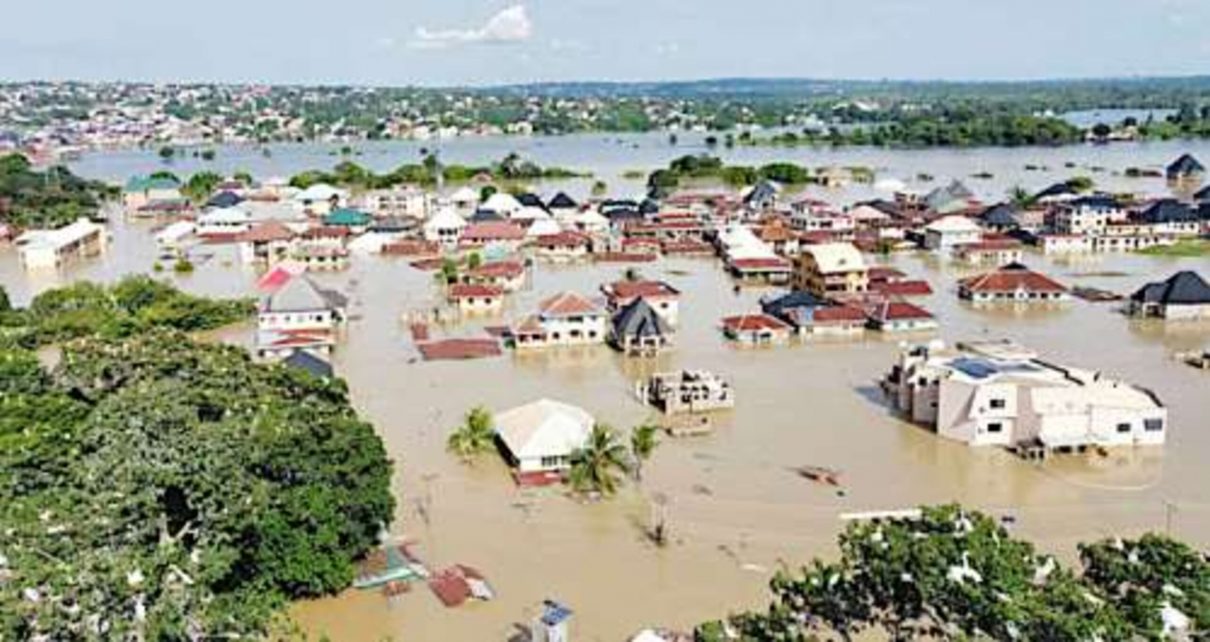Plans for emergency management have been established by the federal government to lessen the flood’s countrywide effects.
Dr. Nasir Sani-Gwarzo, the Permanent Secretary (PS) of the Ministry of Humanitarian Affairs, Disaster Management, and Social Development, said this at a news conference on Tuesday in Abuja.
Sani-Gwarzo remarked following the emergency meeting in Abuja with key stakeholders over the flood situation.
He claimed that in order to lessen the effects of the flood across the country, the government had approved the National Emergency Flood Preparedness and Response Plans.
He claimed that the committee had been warned by specialists in flood disaster management that the scale of the flooding in 2022 will be comparable to that of 2012.
The PS stated that a statement from the meeting will be released to let Nigerians know that the government was not only aware of the crisis but also ready to lessen its effects.
Sani-Gwarzo claims that the government is also ready to ensure that the communities and locations that are unaffected receive some assistance.
He claimed that in order to lessen the effects of the flood across the country, the government had authorised the National Emergency Flood Preparedness and Response Plans, saying that the committee had been warned by specialists in flood disaster management that the scale of the flooding in 2022 would be comparable to that of 2012.
The PS stated that a communique from the meeting would be released to let Nigerians know that the government was not only aware of the situation but also ready to lessen its effects.
Sani-Gwarzo claims that the government is also ready to ensure that the villages and locations that are unaffected receive some assistance.
He recalled that NiMet had earlier this year predicted that as one of the African countries released water from its dam, some areas of the country would experience increased rainfall well into the rainy season.
According to Sani-Gwarzo, Nigeria’s intake of water increased as a result of the water’s release.
Adding that the flooding was caused by the water’s discharge, he emphasized that through God’s grace, the effect would be minimised to the barest minimum and claimed that more lives would be saved.
He claimed that the National Emergency Management Agency distributed relief supplies to 315,000 people who had been uprooted due to the flooding.
“It is on record that over 1.4 million people were displaced, with about 500 people being reported dead, 790,254 people moved out of their locations, while 1,546 people were injured.
“Similarly, 44,099 houses were partially damaged, 45,249 houses, were totally damaged, 76,168 hectares of farmland were partially destroyed, and 70,566 hectares of farmland were completely destroyed.
“The National Emergency Flood Preparedness and Response Plans for Nigeria have just been approved by the Federal Executive Council and they contain all the details of the roadmap that needs to be done.
“It includes the immediate, short-term, and long-term plans and therefore, we have a clear view of what to do and how to go about it, mitigating and reducing the impact of floods in the country.
“We are taking all the necessary actions to bring relief to the people affected by the flood. All the concerned agencies have renewed their commitment to strengthen their efforts in reaching out to the victims and bringing relief to them,” he said.
Sani-Gwarzo revealed that during the meeting of the stakeholders, they came up with three prompt approaches for the future.
“They include, the immediate actions that would be taken by respective agencies, the short-term measures, and the long-term measures that would be taken by agencies responsible.”



